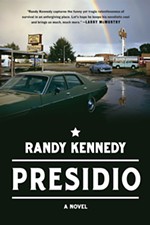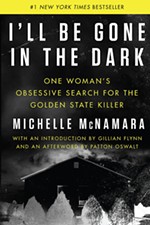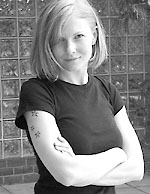Book Review: Readings
Toni Morrison
Reviewed by Roger Gathman, Fri., Nov. 28, 2003

Love
by Toni MorrisonKnopf, 202pp., $23.95
Toni Morrison, like Aeschylus and Eugene O'Neill, has a fondness for tragic houses. As far back in her career as Sula, her writing is both entranced and enhanced by the peculiar, claustrophobic ferocity of in-kin fighting that can burn up 20 or 30 years between people who live a hall-length away from each other.
Just as a geometric proof returns again and again to a hypothesis, Morrison's story of four women -- three living, and one a sort of nominal spirit -- seems to return to a line uttered at the end of this book: "[T]here is nothing a sporting woman won't do." Is that recklessness a panic flight from real dangers, or the assertion of some greater, and to an outsider inaccessible, freedom?
The three major living women are Junior, an 18-year-old veteran of correctional institutes and family abuse; Heed, the widow of Bill Cosey, the wealthiest man in the seaside town of Silk, owner of the town's once-famous resort hotel; and Christine, Heed's archenemy and current factotum. Christine, who cooks for Heed and lives in the Cosey mansion, is Cosey's granddaughter. Cosey's dead cook, L, is the ghost in this mix. Her old woman's beyond-the-grave rap (in italics) on things sexual, racial, and familial, keys the mood. Mood is important here, as the story seems to dissolve and resolve as the book progresses, like something seen through a fog. Junior arrives in Silk and is promptly hired by Heed to help her outwit Christine. Junior has her own agenda, part of which involves rough sex with the 14-year-old part-time caretaker, Romen. Romen is a decent boy who lives in a world that is ruled by the imp of the gangbanging perverse, otherwise known as high school. He's shunned at school for having interrupted a literal gangbang at a party; in Junior, he at first sees a way of regaining his sexual valor.
The plot, in other words, is a variant of that old Bette Davis movie, What Ever Happened to Baby Jane? Morrison's challenge is to take these figures and make them live. Romen and his grandfather, Sandler, have essentially walk-on rolls, but they do fill the margins. Heed, a bedridden victim, is a drain on the book's energy and the reader's patience. Christine, who spends the better part of her life away from Silk, is the most interesting of the bunch. She cooks Heed's meals wearing all of her diamond rings. She has a penetration that is beyond her novelistic function. Morrison gives her a past that is a travelogue of sexual affairs and political activism, and it is intense enough that one feels her battle of wits with Heed over a mere shabby property is a letdown, an authorial foreshortening of her energy in the interest of a story into which a woman of her intelligence doesn't quite fit. Bill Cosey, dead paterfamilias, lech, creator, and destroyer, plays a puzzling role in the story. Heed was 11 when she married Cosey, who essentially bought her from her family for 200 bucks. Although he assures friends that he waited for her first menses before he "took" her, the elevation of a poor little girl, Christine's playmate, to mistress of the house doesn't set well with May, Christine's widowed mother, and it unbalances Christine for life; incidentally, it prejudices the reader against Cosey, too. But Morrison is not out for easy moral prey. As L says, he was a "good bad man or a bad good man." Cosey, for all his appetite, has an undeniable energy and courage.
So where is the love? It seems all too sporadic, and much too ephemeral to build anything on. L says that Cosey "was an ordinary man ripped, like the rest of us, by wrath and love." The name of that rip is not so easily found in our emotional vocabulary.










